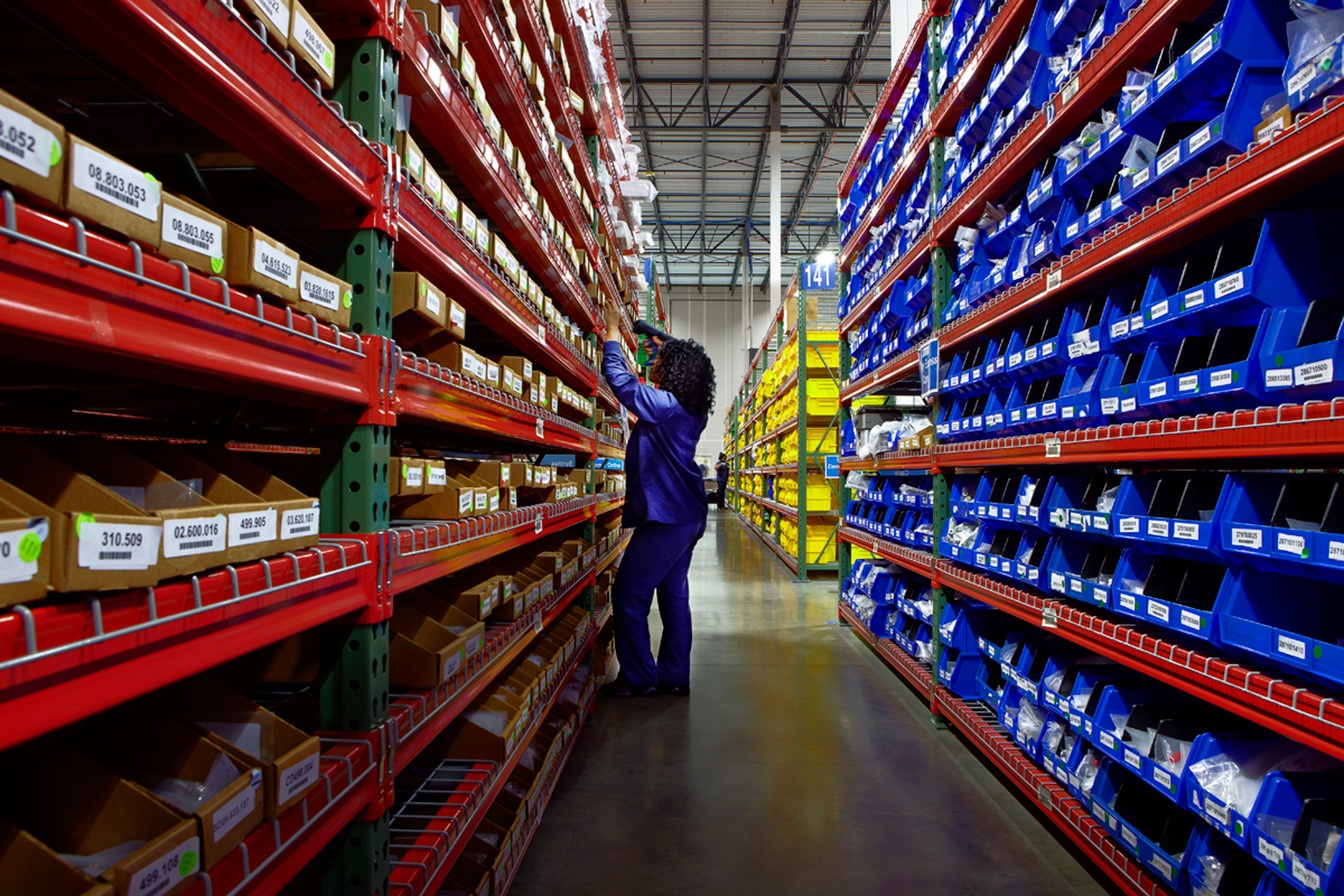In spine/orthopedic companies, where efficiency and precision are both crucial, the need to streamline order-to-cash (O2C) processes is more urgent than ever. Pricing errors, lost hospital purchase orders, or inventory discrepancies on sales orders are all typical setbacks in this critical process. Even with these processes being known, inefficient O2C processes persist, creating bottlenecks, draining resources, and jeopardizing distributor/surgeon/hospital relationships.
The O2C cycle—from delivery in surgery to payment receipt—forms the backbone of any thriving business. For spine/orthopedic manufacturers, it's the critical link between winning and maintaining business as efficiently as possible. But in an era of pricing pressure and ever-increasing competition, many companies find their O2C workflows stuck in the past.
Today's spine/orthopedic landscape is unforgiving as manufacturers face relentless pressure to optimize operations, cut costs, provide more inventory, and accelerate time-to-market. Continued reliance on outdated O2C systems and workflows is not just a drain on time and money, but a direct threat to business growth.
The Problem: Bottlenecks in the Order-to-Cash Cycle
Let's face it: For an industry capable of creating cutting-edge implants, their order-to-cash processes should also be streamlined. But that is just not the case, due primarily to:
- Manual Data Entry Mayhem - Picture Bob from Customer Service, squinting at handwritten order forms. Typos turn into $10,000 mistakes (ouch!). Your best people are stuck playing data entry whack-a-mole.
- Inventory Visibility Vacuum "Do we have that inventory on hand?" – The question that strikes fear into sales teams. Warehouses and field inventory locations (distributors) are playing hide-and-seek with critical implants. There's a constant tug-of-war between stockouts and excess inventory.
- Approval Bottlenecks - Orders crawl through approval chains slower than molasses. The dreaded "Who's supposed to sign off on this?" email thread never ends. Decision-makers play phone tag while surgeries keep coming in.
- Communication Breakdown - Departments seem to communicate via carrier pigeon. Distributors are left wondering if their orders vanished into thin air, and customer service reps are armed with shrugs instead of answers.
If this sounds painfully familiar, you're not alone. The "Framework for Establishing Asset Visibility and Traceability of Medical Devices"1 paper didn't mince words – our industry is crying out for better visibility and control. And it's not just about making life easier for operations and customer service. These hiccups ripple out, affecting everything from regulatory compliance to (gulp) patient outcomes.
So why are we, the wizards of titanium and high-tech polymers, still fumbling with processes that wouldn't look out of place in a 1980s sitcom? Change is hard, sure. But at what point does "the way we've always done it" become "the way we're shooting ourselves in the foot"?
The Path to Efficiency: Modernizing the O2C Workflow
Alright, we've painted a pretty grim picture of the current state of affairs. But don't panic – there's light at the end of the tunnel, and it's not an oncoming train. Let's talk about dragging that O2C process into the 21st century:
- Embrace Automation (It Won't Bite) - Remember Bob from Customer Service? Let's give him a break. Modern O2C systems can automatically capture order data at the point of care, validate it, and route it to the right places. No more squinting at chicken scratch or playing "guess that product code."
- Real-Time Tracking (Because Crystal Balls are Unreliable) - Imagine knowing exactly where every implant is, from the warehouse shelf to the operating room. Real-time inventory tracking isn't just possible; it's essential. Your sales team will thank you, as will hospitals that need to know their orders are on track.
- Data Analytics (Turn Those Numbers into Knowledge) - Your O2C process is a goldmine of data. Modern systems can help you spot trends, identify bottlenecks, and make informed decisions. Who's your star performer? Which products are always running low? Now you'll know.
- Seamless Communication (No Carrier Pigeons Required) - Break down those departmental silos with integrated communication tools. When everyone from sales to shipping is on the same page, magic happens. Distributors stay informed, customers stay happy, and you stay sane.
- Mobile Accessibility (Because Work Doesn't Happen Behind a Desk) - Approvals shouldn't grind to a halt because someone's out of the office. Mobile-friendly O2C systems let decision-makers keep things moving from anywhere. Vacation in Bali? No problem. Approve that urgent order between Mai Tais.
- Customizable Workflows (One Size Fits... One) - Your business is unique, and your O2C process should reflect that. Look for solutions that let you tailor workflows to your specific needs. You may need extra validation for high-value orders or special handling for certain customers. The right system will flex to fit you, not vice versa.
It's about creating a leaner, meaner spine/orthopedic business. One that's ready to tackle whatever challenges the market throws your way.
Remember that paper we mentioned earlier? It wasn't just doom and gloom. It highlighted how improved traceability and visibility can reduce costs, improve regulatory compliance, and improve patient outcomes. It's a good payoff for updating a few processes, right?
The Benefits: A Streamlined O2C Leads to Success
So, you've modernized your O2C process. You've traded in your emails, text messages, and phone calls for cutting-edge tech. But what's the real payoff? Let's break down the benefits that'll have you wondering why you didn't make the switch sooner:
- Time is Money (And You'll Save Both) - Industry benchmarks suggest that best-in-class O2C processes can reduce order processing time by up to 50%. Imagine cutting your processing time in half. That's not just efficiency; it's a competitive edge.
- Accuracy: The New Superpower - Manual data entry errors can cost up to 30% of revenue. With automated systems, you're looking at 99%+ accuracy rates. Say goodbye to costly mistakes and hello to happier customers (and Customer Service team members).
- Cash Flow Gets a Boost - A streamlined O2C process can accelerate cash flow by reducing Days Sales Outstanding (DSO) by 20-30%. That's not just a number—it's working capital back in your pocket.
- Inventory That Works for You - Real-time tracking can improve inventory accuracy by up to 95%—no more overstocking "just in case" or scrambling to fill unexpected orders. Your warehouse and field inventory locations become a well-oiled machine.
- Customer Satisfaction Skyrockets - When orders are processed faster and more accurately, guess what happens? Customers notice. We're talking about potential increases in customer satisfaction scores of 25% or more. Happy customers mean repeat business and glowing referrals.
- Compliance Made Easy(ier) - In our highly regulated industry, compliance is non-negotiable. Modern O2C systems provide better traceability and documentation, potentially reducing field audit preparation time by up to 50%.
- Your Team: Less Stressed, More Productive - When your staff isn't bogged down in manual processes, they can focus on value-added tasks. We've seen productivity increases of up to 30% in companies that modernize their O2C workflows.
- The Ripple Effect on Patient Care - Here's where it gets fascinating. A more efficient supply chain doesn't just benefit your bottom line but can improve patient care. Faster deliveries mean fewer delayed surgeries. Accurate tracking means reduced risk of using expired products.
Now, let's be clear: these numbers aren't guaranteed. Your mileage may vary, as they say. But they're based on real-world results from companies that have invested in O2C modernization.
The question isn't whether you can afford to update your O2C process. It's whether you can afford not to. This could be the edge that sets you apart in a world where margins are tight, and competition is fierce.
Conclusion
We've explored the critical role of order-to-cash processes in the spine/orthopedic industry. The message is clear: modernizing O2C isn't just a tech upgrade—it's a strategic imperative.
Streamlined O2C processes offer a triple threat of benefits:
- Increased operational efficiency
- Improved financial performance
- Enhanced patient care through a more responsive supply chain
Your back-office operations can't afford to lag behind in an industry that is constantly evolving. The future belongs to those who can seamlessly connect orders to cash, turning administrative hurdles into competitive advantages.
Ready to revolutionize your O2C process?
Request a free assessment to help you identify opportunities for improvement. Don't let outdated workflows hold you back—take the first step towards optimization today!
1Abigail J. Smith, "Framework for Establishing Asset Visibility and Traceability of Medical Devices" (Master's thesis, Massachusetts Institute of Technology, 2020).







